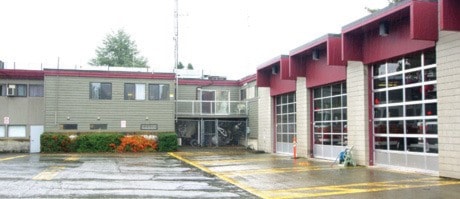At an estimated $15 million, plans for a new municipal hall in the District of Central Saanich could be the largest capital project undertaken by the local government.
That seems to be the reason behind the cautious approach to the project being taken by the district and its mayor, as well as the plan for ongoing public consultation. The bottom line for the success of the plan to replace the existing 50-year-old town hall, agree the chief administrative officer and the mayor, is for the community to buy into it.
“We are still at the information gathering phase,” says mayor Alastair Bryson. “It’s a concept and at this point we’re looking into just how feasible it is.”
The district states there’s no rush into the project, which has been talked about since long before a 2006 facilities planning process. That work determined the existing municipal complex needed to be replaced or renovated due to health and safety concerns and a critical lack of space for the Central Saanich Police Service. By 2009, the district had a consultant tell them renovating the site would cost in the area of $19 million. A new structure would cost only $15 to $16 million, so that option is the one being touted today.
Since the project is so large in scope, CAO Patrick Robins said they are putting as much information to the public as possible, soliciting residents’ feedback and will return to the community for more meetings long before a decision is made.
The district held a community meeting Oct. 13 that saw 83 people register. Robins said there were more who showed up and took part in a question and answer session with staff and council.
Neither Robins or Bryson indicated there was overwhelming support — or an overwhelming lack of it — from the residents at the meeting.
What it did do was give them a sense of the issues concerning people and the knowledge that they still have a lot of work to do.
“There is a lot of information available to residents on this,” said Bryson, “and lots of issues to debate. Clearly, the tax implications for the property were heard.”
The district will have to borrow millions to pay for whatever project they proceed with — new or a renovation. The plan, clearly focussed on building new, is to add an additional tax of $15 to $20 per year, for each $100,000 of assessed residential property value. Commercial properties would see an additional $30 to $40 per year, for each $100,000 in assessed value.
The variation in dollar amount comes from the district’s plan to sell off two lots for an estimated $2 or $3 million.
“Nothing is written in stone. Nothing, not even the renovation option, is off the table,” added Robins, saying the municipality is giving people an idea of what a new town hall, police facility and a satellite fire hall would look like.
Information and drawings of a new town hall, satellite fire hall, green space and new parking are available on the district’s website (www.centralsaanich.ca), as is a way for people to leave comments. Feedback from the Oct. 13 public meeting will be compiled and added to the frequently asked questions portion of the site. Bryson said the council will be going back to the public in further meetings, including an open house in early 2013 (date to be determined). He added he knows the project itself might not even start during this council’s term of office.
“It has been a long process,” he said. “It will be some time before a conclusion is reached.”
Voters to have final say
When it comes time for the District of Central Saanich to borrow money for the town hall replacement project, residents will be asked to say yea or nay. However, the jury is out on what form the referendum will take.
Mayor Alastair Bryson says the district doesn’t have the money to pay for it without getting a long-term loan. And as the amount they anticipate borrowing would require voter assent, they will explore both the alternative approvals process or a full-fledged referendum.
Bryson said the district used the AAP (once known as a counter-petition, forcing voters to say no, rather than yes) for its current new fire hall project. He said that was a different scope (only around $9 million) than the town hall plan.
“This is a different project with a different magnitude of borrowing.”
He said council has not made a decision on which approvals process to use. Bryson added he knows any talk of using the AAP will anger some people, but its use is an approved option.
“But I am not going to prejudge what council might do.”
